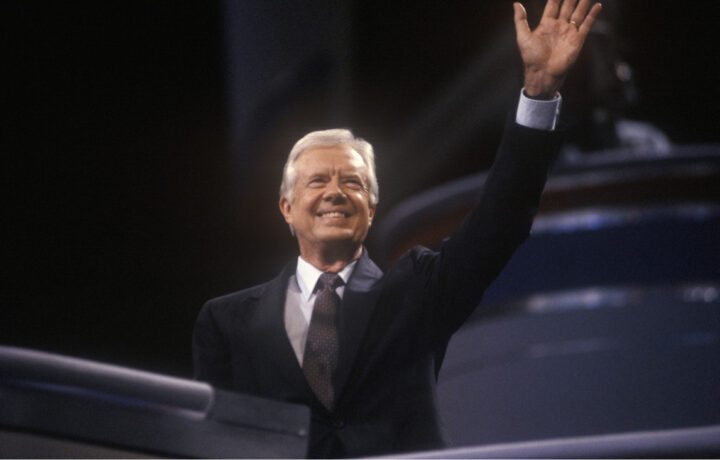On Tuesday, the body of the late President Jimmy Carter traveled from the United States Navy Memorial to the United States Capitol Building by horse-drawn caisson. Carter had personally chosen the memorial as the site of the transfer from the hearse while he planned his funeral.
The funeral schedule has already included a pause at his boyhood farm; a motorcade to Atlanta; a pause at the Georgia State Capitol; a service at the Carter Presidential Center; and public visitation in Atlanta; while it will also include public visitation in Washington, a funeral procession in the nation’s capital, and a service at the U.S. Capitol Building. The National Funeral Service will take place at the Washington National Cathedral, while a private service and interment will be in Plains, Georgia.
President Carter had authorized the building of the United States Navy Memorial Plaza and Visitors Center on Pennsylvania Avenue in 1980, USNI News reported. In 1977, Mr. Carter had opted to walk down Pennsylvania Avenue to the White House instead of arriving by limousine, telling his mother, “I’m going to walk among the people who voted for me.”
A Navy Man
Mr. Carter was the only former president to attend the United States Naval Academy at Annapolis, and he later served as a submariner from 1946 to 1953.
During his naval career, President Carter was the nuclear engineer officer on the Pre-Commissioning Unit Seawolf (SSN 575) in the 1950s. While he left active duty as a U.S. Navy lieutenant, Mr. Carter continued his service as a reservist until 1961.
The Army Caissons
Though a “Navy Man,” Carter’s remains were carried by the Caisson Detachment of the U.S. Army’s 3rd Infantry Regiment (The Old Guard). Its mission is to serve as the mounted escort to the nation’s fallen.
“The Caisson is authorized for Military funeral honors with escort for all Medal of Honor recipients, those who were prisoners of war (POWs) or who were killed in action (KIA), officers O-4 and above, and service members who attained the most senior enlisted and warrant officer ranks. The Caisson is also authorized for all state funerals,” the Joint Task Force – National Capital Region explained on its website.
The Caisson Department has carried out its duties of escorting the fallen since 1948 when the 3rd ID was reactivated at Fort Myer, Virginia. The role had previously belonged to the 3rd Cavalry Regiment,” JTFNCR added.
The original Caisson wagons were built by the American Carriage and Foundry Company in 1918 to escort 75mm cannons, and were initially equipped with ammunition chests, spare wheels, and tools to maintain the cannons – but those items were replaced by a flat deck on which the casket rests.
The tradition dates back to at least the 19th century when wagons would deliver supplies to the front lines but return with the dead and wounded. The practice began at Arlington National Cemetery following the First World War.
The caisson is followed by the “riderless horse,” which has an empty saddle and the rider’s boots reversed in the stirrups to indicate that the warrior will never ride again. Tradition allows a caparisoned horse to follow the casket of presidents of the United States, as Commander in Chief. The funeral for President Ronald Reagan, a horse enthusiast, was the last to feature the caisson unit.
Return to Duties
Last year, the U.S. Army paused the ceremonial duties of the caisson platoon after the deaths of multiple horses. As reported by The Washington Post, military officials “solicited help from public and private equestrian experts, including an Olympic gold medalist equestrian and the Royal Canadian Mounted Police, to help train the horses and soldiers.”
A 2022 investigation conducted by the Army found the living conditions for the horses had been neglectful. Five dozen horses had been retired. The program is now being revamped, with Olympic equestrian gold medalist David O’Connor supervising the creation of a 12-week course to teach soldiers basic horsemanship.
And while the hiatus that began in May 2023 was meant to last until at least June 2024, an exemption was made for President Carter.
“We are executing our flagship mission,” Lt. Col. Branden Quintana, commander of the Caisson Detachment, told USA Today. “There’s no better way for us to pay our respect and honor the former president. It’s something we feel in the center of our heart, the pit of our stomach. This is the pinnacle.”




